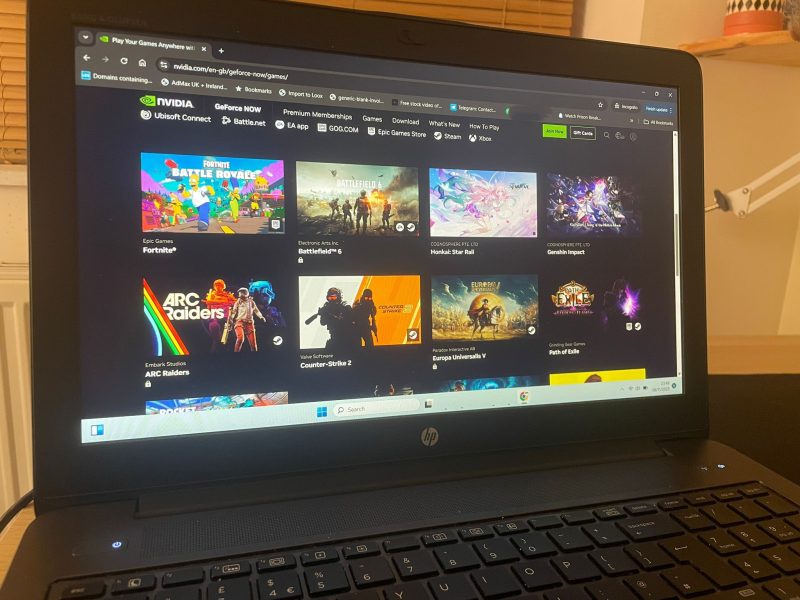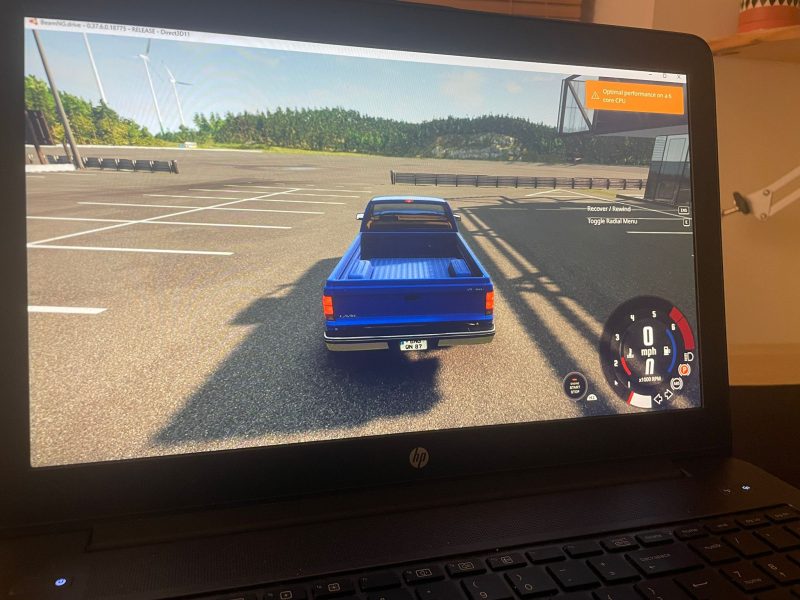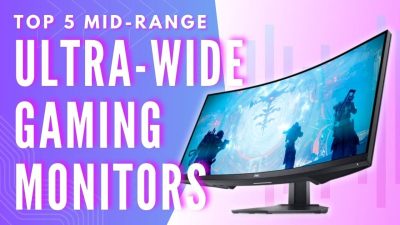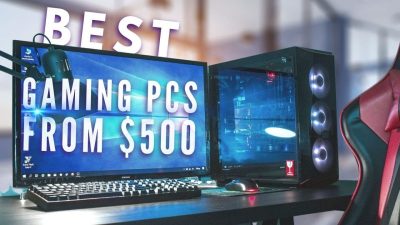📢 Disclosure: Some links on this page are affiliate links. As an Amazon Associate, I earn from qualifying purchases at no extra cost to you. Thanks for your support.
With the rise of cloud gaming, your gaming setup is no longer defined by hardware. You no longer need a powerful PC tower with a dedicated graphics card, a console hooked up to your TV, or a high-end gaming laptop with enough cooling power to sound like a jet engine, to play your favorite games. That’s because in recent years, the gaming world has quietly been moving toward something almost unthinkable back then, and that’s playing high-end games streamed directly from the cloud.

Cloud gaming, at its core, removes the heavy lifting from your device and places it on remote data centers packed with powerful GPUs and CPUs. Instead of rendering games locally, you’re streaming live gameplay much like you’d stream a Netflix movie, except your inputs are sent back in real time. The idea isn’t new; early attempts like OnLive in 2010 and Gaikai (later acquired by Sony) laid the groundwork for what we now know as game streaming. At the time, however, the internet infrastructure simply wasn’t ready. Latency issues, data caps, and limited broadband speeds meant most players couldn’t experience the potential that cloud gaming promised.
Fast forward to today, and the landscape looks very different. Albeit, internet speed does remain one of the main issues regarding how well you can steam the live game. But for a big part of the world, internet speeds have surged, 5G networks are becoming widespread, and NVIDIA, Microsoft, Amazon, and even smaller startups have refined the technology to the point where cloud gaming is not just playable, it’s become practical. You can now load up demanding titles like Cyberpunk 2077 or Red Dead Redemption 2 on a thin-and-light laptop, a mid-range phone, or even a smart TV. The device doesn’t matter nearly as much as your connection.
And if you’re using a laptop with a quality display, like on a Mac, you can now experience gaming with beautiful clarity on a device you may have thought gaming wouldn’t be possible.
The appeal is easy to see: and that’s because you no longer need to spend thousands upgrading GPUs or worrying about hardware shortages. With cloud gaming, a stable internet connection effectively is your console. Whether you’re playing through NVIDIA GeForce Now, Xbox Cloud Gaming, Amazon Luna, or Boosteroid, you’re tapping into a shared idea, high-fidelity gaming without the financial or physical hardware barrier.

Of course there are huge benefits to having your own dedicated GPU setup. In comparision, you wouldn’t need to rely on internet connection and GPU’s can also help with laptor or desktop performance, especially if you’re doing 3D redending projects or intensive video editing. You may also not feel comfortable with live streaming your game from another remote computer. Having your own setup can give you that privacy and convenience. But, it’s hard denying that these cloud gaming setups do make advanced gaming much more accessible for the everyday user.
The evolution also reflects how gaming culture itself is changing. More players now value convenience and portability. They want to jump into a game instantly, pause it, and continue later from another device. Services like GeForce Now and Xbox Cloud Gaming sync progress across platforms, making that kind of seamless play a reality. Meanwhile, the rise of subscription models has blurred the line between owning and accessing games, a shift that mirrors what happened to music and film years ago.
Today, cloud gaming sits at a fascinating intersection of accessibility and ambition. It’s not perfect, connection quality still matters, and some regions lag behind. But it’s no longer an experiment. It’s a legitimate way to play, and for many people, it’s becoming their main way to play. What once felt futuristic is now an everyday reality, and platforms like NVIDIA GeForce Now are leading that transformation.
We chose Nvidia’s GeForce now subscription due to it’s fantastic 5000 GPU series hardware, great value and game library to test for this article. Let’s run over their platform in more detail, keep reading to learn more about GeForce Now.
What Is NVIDIA GeForce Now?

NVIDIA GeForce Now is a cloud gaming platform that lets you play PC games without actually owning a gaming PC. As we mentioned, this is kind of like a Netflix for gaming, instead of downloading massive files or buying expensive hardware, you stream the game from NVIDIA’s high-performance servers straight to your device. You still play the titles you own on platforms like Steam, Epic Games, or Ubisoft Connect, but the heavy lifting like graphics rendering, ray tracing, and processing all happens in NVIDIA’s data centers. All your laptop, tablet, or phone does is stream the visuals and send your inputs back.
It’s pretty simple to connect your game libraries, too. We use Steam, so by heading into the settings, you can link your library by logging in with your account. You might encounter a few issues when connecting through the live site, often caused by ad blockers or library accessibility settings. If that happens, try disabling any blockers temporarily and make sure your games are set to allow cloud access. For example, we had to adjust our Steam library permissions to make certain games playable on GeForce Now. Once connected properly, your games appear instantly, ready to launch straight from the cloud.
Currently, NVIDIA offers three main GeForce Now tiers: Free, Performance, and Ultimate. The Free plan gives players access to over 2,000 games with 1080p streaming and one-hour sessions, though it includes ads and doesn’t guarantee priority access. The Performance plan, runs on GeForce RTX-class hardware, offering six-hour sessions and up to 1440p resolution at 60 FPS, a big upgrade from the free tier. Meanwhile, the Ultimate tier unlocks RTX 4080 servers, with support for 4K resolution, up to 240 FPS, and even RTX 5080-level performance for select titles; ideal for competitive or hardcore gamers.
We went with the middle Performance package, as it strikes the best balance between cost and capability. For most casual or moderate gamers, it delivers smooth performance, great visual quality, and enough session time to play comfortably without paying premium-tier prices.
No High-End Gaming PC? No Problem.

One of GeForce Now’s biggest strengths is its hardware freedom. You can run it on virtually anything, from a low-spec laptop with integrated Intel graphics to a lightweight MacBook Air. NVIDIA’s RTX-powered servers handle everything, including ray tracing and ultra settings.
That makes it perfect for players who don’t want to chase the latest GPU or replace their system every few years. I’ve been testing it on an older HP ZBook, which still has an M2200 GPU, decent for light editing work, but not exactly gaming-ready. Before GeForce Now, I couldn’t get through most modern titles without freezing or frame drops. But once I switched to GeForce Now, it ran Battlefield 6 beautifully through the subscription. For casual gamers or those who just want to dip into AAA titles occasionally, it’s a total game-changer.
System Requirements & Internet Speed
So what do you actually need to get started? The system requirements are surprisingly minimal, all you really need is a solid internet connection. NVIDIA recommends 5 Mbps for 1080p at 60 FPS or 35 Mbps for 4K streaming. In practice, a stable connection matters more than raw speed, so consistency is key.
If you can, use a wired Ethernet connection for the best performance. I know that’s not always easy, especially when your setup isn’t near a router or there aren’t spare ports available. That’s where powerline adapters can make a huge difference. I’ve been using a TP-Link adapter, and it’s been a complete game-changer, you just plug one unit into the wall near your router and connect it via Ethernet, then plug the second one into any other power outlet in your home. It instantly turns that outlet into a wired Ethernet port, giving you a faster and more stable connection without running cables across the house.
GeForce Now runs on Windows, macOS, Android, iOS, ChromeOS, and even some smart TVs, making it accessible on nearly any modern device. I tested it over Wi-Fi only, with a download speed of around 30 Mbps, and it ran surprisingly well, smooth visuals and no major input lag. That said, as mentioned earlier, a wired Ethernet connection is still ideal for competitive or latency-sensitive games where every millisecond counts.
Performance and how to play
In real-world use, performance is where GeForce Now truly impresses. Even on mid-tier hardware, games load quickly and look fantastic. Latency is very low, often around 20–30 ms depending on location, which feels remarkably close to local play.
The service dynamically adjusts stream quality to prevent lag or frame drops, and features like ray tracing and DLSS make visuals shine even more. Whether you’re gaming on a laptop, tablet, or phone with a controller, it genuinely feels like having a high-end rig at your fingertips.
Unlike subscription-based services such as Xbox Cloud Gaming, GeForce Now connects to the games you already own. It supports major stores like Steam, Epic Games, GOG, and Ubisoft Connect, with thousands of compatible titles including Cyberpunk 2077, Apex Legends, Fortnite, and Baldur’s Gate 3.
But also keep in mind that not every game store or title is supported and if you’re using the free subscription, there are occasional queue times for free users. Also, due to it relying heavily on internet speeds, for those in rural or low-bandwidth areas, it may not yet be a practical replacement for local gaming.
Best Alternatives to GeForce Now
While NVIDIA leads the pack, a few strong competitors exist:
- Xbox Cloud Gaming (Game Pass Ultimate): Offers a rotating library of 100+ games. Great for console-style access.
- Amazon Luna: Uses a “channel” subscription model for different genres.
- Boosteroid: European-based, supports a wide range of games with solid performance.
- Shadow PC: More than gaming, it gives you a full virtual Windows PC in the cloud.
Each has its advantages, but GeForce Now remains the most flexible if you already have a game library.
Closing Thoughts

Today, GeForce Now feels like the most mature and polished form of cloud gaming yet. It’s fast, reliable, and compatible with nearly every device. For travellers, casual gamers, or anyone who doesn’t want to constantly upgrade their rig, it’s an incredible option.
It’s not a total replacement for local gaming yet, especially for those who demand absolute zero latency, but it’s good enough for most casual gamers, especially if you don’t want to get a gaming setup with a dedicated GPU. Cloud gaming is moving from convenience to capability, and NVIDIA is leading that charge at the moment.
As networks continue to improve and AI-driven rendering becomes more efficient, the idea of needing a dedicated gaming PC may soon feel as outdated as owning a DVD player. Cloud gaming isn’t just a clever workaround anymore, it’s a real, accessible way to play. Services like NVIDIA GeForce Now have taken the promise of streaming and turned it into something that actually works, even on aging laptops or basic devices. Whether you’re travelling, saving space, or just avoiding another expensive GPU upgrade, the ability to stream ultra-quality games from the cloud feels like one of the biggest shifts in modern gaming.
From running AAA titles on a budget laptop to seamlessly picking up progress across devices, cloud gaming proves that power no longer has to live inside your machine, it can live anywhere. And as connection speeds and streaming tech continue to evolve, it’s hard not to imagine a near future where every device is a gaming device.
Consider subscribing to our newsletter to get updates on Cloud Gaming and GeForce Now. Thanks for reading! Check out our similar articles below.

